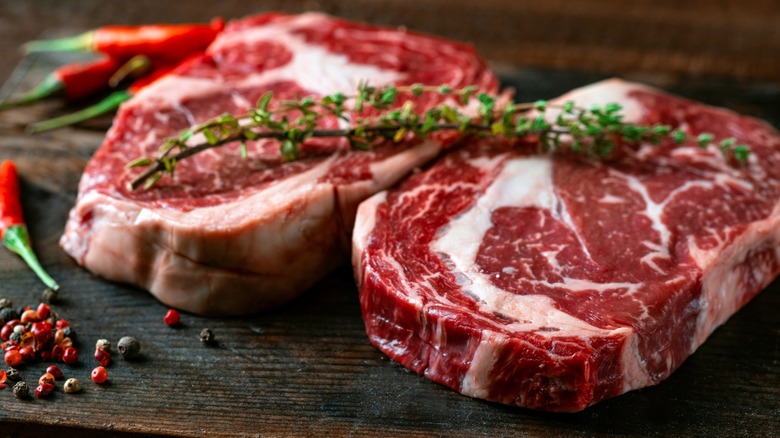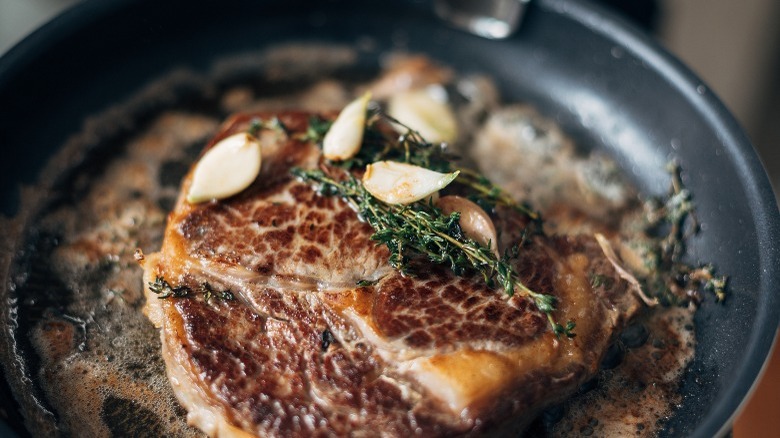The Best Reason To Cook Steak On The Fat Side First
Just the thought of a steak sizzling away on a smoking hot skillet is enough to make you feel tingly on the inside as you imagine yourself biting through that crispy crust and into the juicy, flavorful center. But to actually cook such drool-inducing meat, you must employ the best techniques while paying attention to all the little details because every step has a role to play in the grand scheme of perfect steak cooking. So it's no surprise that top chefs like Alain Ducasse of Benoit in New York recommend and point to specific details to achieve this, per Taste Kitchen.
One of the most important tips to follow is to cook beef on the fat side first. If you already know to do this, that's great. But if you've never given the fatty side of your steak first priority after your pan has reached the recommended smoking-hot temperature, then you better listen up. The reason experienced chefs are so particular about this fatty edge is that cooking it results in a flavorful finished dish.
Rendering the fat first makes a flavorful steak
Let's be clear that this tip calls for the more fatty cuts of steak like sirloin or ribeye. Once you place the fat side on the pan, it melts out, creating a pool of flavorful fat in which you'll complete the rest of your cooking. That means every other side of the meat that faces the pan after that gets dunked into this flavorsome liquid right from the beef itself, not just plain oil. And because you rendered the fat at the beginning of the cooking, the rest of the steak has more time to soak in all the fatty goodness that produces a nice meaty flavor.
So if your piece of steak has a fat cap, you'll need to hold it up using tongs as you render the fatty edge. Once you've heated up that side, continue to cook the rest of your meat as you normally would, ensuring every side has enough time to sear as it cooks through. And if you care for even more flavor, then consider basting your beef with herb-infused butter at the very end. With that, your perfect pan-seared steak is ready to serve.

